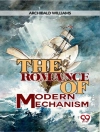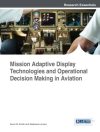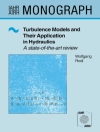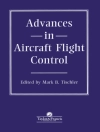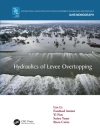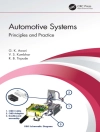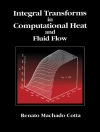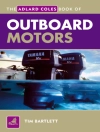This book comprehensively discusses diesel combustion phenomena like ignition delay, fuel-air mixing, rate of heat release, and emissions of smoke, particulate and nitric oxide. It enables quantitative evaluation of these important phenomena and parameters. Most importantly, it attempts to model them with constants that are independent of engine types and hence they could be applied by the engineers and researchers for a general engine. This book emphasizes the importance of the spray at the wall in precisely describing the heat release and emissions for most of the engines on and off-road. It gives models for heat release and emissions. Every model is thoroughly validated by detailed experiments using a broad range of engines. The book describes an elegant quasi-one-dimensional model for heat release in diesel engines with single as well as multiple injections. The book describes how the two aspects, namely, fuel injection rate and the diameter of the combustion bowl in the piston, have enabled meeting advanced emission, noise, and performance standards. The book also discusses the topics of computational fluid dynamics encompassing RANS and LES models of turbulence. Given the contents, this book will be useful for students, researchers and professionals working in the area of vehicle engineering and engine technology. This book will also be a good professional book for practising engineers in the field of combustion engines and automotive engineering.
Содержание
Introduction.- Phenomenology of diesel Combustion and modelling.- Experiments.- Turbulent Structure of the Diesel Spray.- Ignition Delay in a Diesel Engine.- Heat Transfer.- Heat Release in Indirect Injection engines.- Mixing Correlations for Smoke and Fuel Consumption of Direct Injection engines.- Heat Release in Direct Injection Engines.- Prediction of the Rate of Heat Release of Mixing-Controlled Combustion in a Common-Rail Engine with Pilot and Post Injections.- Hydrocarbons from DI Diesel Engines.- Hydrocarbon Emissions from Spark Ignition Engines.- Smoke from DI Diesel engines.- Oxides of Nitrogen from Direct Injection Diesel Engines.- Particulate Matter from Direct Injection Diesel engines.- Multi-dimensional Modelling of Diesel Combustion.- Multi-dimensional Modelling of Diesel Combustion.- Large Eddy Simulation and Prediction of Heat Release, NOx and Soot in Diesel and Gasoline DI engines.
Об авторе
Dr. P. A. Lakshminarayanan (born 1950) studied at Indian Institute of Technology Madras for his B. Tech, M.S. and Ph.D. degrees. He worked at Loughborough University of Technology and Kirloskar Oil Engines Ltd. for about five and twenty years, respectively, before moving to Ashok Leyland in 2002 to head the Engine R&D. From 2011 till 2019, he was the CTO, and the Technical Adviser at Simpson and Co. Ltd. Now, he is an adjunct professor at IIT Kanpur.
With his teams, he has developed more than eight diesel and CNG engine platforms and 150 engine types commercially successful for efficiency and cost effectiveness. Two engine designs received prizes from the Institute of Directors (India). Twelve ideas were patented during the development of engines over 40 years. He has authored 54 research papers in journals and conferences of international repute. Four of them received the prizes for integrity and quality of contents from the SAE (Arch Colwell Award), Combustion Society (India), AVL (Graz) and AVL (India) in 1983, 1993, 2005 and 2011, respectively. He has coauthored two books titled “Modeling Diesel Combustion” (Springer 2010) and “Critical Component Wear of Parts in heavy Duty Engines” (John Wiley 2011). He has coedited a handbook “Design and Development of Heavy Duty Diesel Engines” (Springer, 2020). Now, he is editing his fourth book “Thermal Management of Engines for Performance and Emissions” which is due in 2021. He is elected to the fellowships of SAE (2009), INAE (2013) and ISEES (2018).Dr. Yogesh V. Aghav received B. E. and M. Tech. degrees from VIT Pune and IIT Madras, respectively. His Doctoral degree is from IIT Delhi for his research work on heat release in diesel engines. Currently, he is the associate vice president of the corporate Research and Engineering, Kirloskar Oil Engines Ltd., Pune, with responsibilities for the performance, emissions, NVH, and development of internal combustion engines running on diesel and alternative fuels like natural gas and biodiesel. For two years, he served FEV, Pune, and helped to found the organization. For the last 25 years, he has lead teams to develop many engines of swept volumes ranging from 300 c.c. to 32-liter applied to agriculture, off-highway, power generation, construction equipment, marine, and defense.
He has published more than 50 research papers in ASME, SAE, and IMech E journals. He is associated with the boards of studies of VIT and MITADT, Pune. He advises the Universities and takes part in faculty development. He is a member of the SAE India.
Prof. Rolf Reitz’s research interests include internal combustion engines and sprays. He is former director of the Engine Research Center and is Emeritus Wisconsin Distinguished Professor of Mechanical Engineering at the University of Wisconsin-Madison. Before joining UW-Madison he spent six years at the GM Research Laboratories, three years as a research staff member at Princeton University, and two years as a research scientist at the Courant Institute of Mathematical Sciences, New York University. He received his Ph.D. in Mechanical and Aerospace Engineering from Princeton University in 1978. Professor Reitz is a Fellow member of SAE and ASME and he serves as a consultant to many industries through his consulting company, Wisconsin Engine Research Consultants. He is Editor (Americas) and co-founder of the International Journal of Engine Research and is past-Chairman of the Institute of Liquid Atomization and Spraying Systems – North and South America. He and his group have won major research awards, and he has co-authored over 550 technical papers on engine research.
Yu Shi received his Ph.D. in Mechanical Engineering from the Engine Research Center at the University of Wisconsin-Madison, where he specialized in computational optimization of internal combustion engines. After finishing his Ph.D. in 2009, he worked as a postdoctoral associate in the Department of Chemical Engineering at the Massachusetts Institute of Technology, where he contributed to the field of accelerated reactive flow computations using heterogeneous computational architectures. He is currently Senior Data Scientist with the Phillips 66 Company based in Houston, Texas, where he applies advanced machine learning to business analytics.
Dr. Haiwen Ge received B.Eng. and M.Eng. in Engineering Thermophysics from University of Science and Technology of China in 1999 and 2002, respectively. In 2006, he received Doctor of Science in Physical Chemistry from University of Heidelberg, Germany. He joined the Engine Research Center, University of Wisconsin-Madison as a postdoctoral fellow in 2006. Since 2010, he worked for the Ford Motor Company as a resident engineer. In 2013, he joined the Fiat-Chrysler Automobiles (FCA), where he was the Senior Technical Specialist in Combustion Development and Technical Lead in 3D Combustion CFD. In 2016-2017, he was a Senior Combustion CFD Engineer of John Deere. In 2017, he joined the Department of Mechanical Engineering, Texas Tech University as an instructor. He has published one monograph, two book chapters, 68 peer-reviewed publications, and 67 conference papers. Mr. Anirudh Jaipuria completed his B.Tech in Mechanical Engineering from National Institute of Technology-Surat, India after which he joined Ashok Leyland Ltd. as Deputy Manager where he lead the development of the BS-IV Heavy-duty Diesel engine family. Following that he completed his Master’s in Combustion Engines from RWTH Aachen, Germany. In 2012, he joined MAN Diesel & Turbo as Simulation Engineer responsible for Valvetrain development for 4-Stroke Large diesel engines. Since 2015, he has been with BMW M-Gmb H, Munich as SE-Team leader and technical specialist responsible for all dynamic simulations and drivetrain development for high-performance sports cars. He has five publicationsand has been a speaker at two international conferences.


